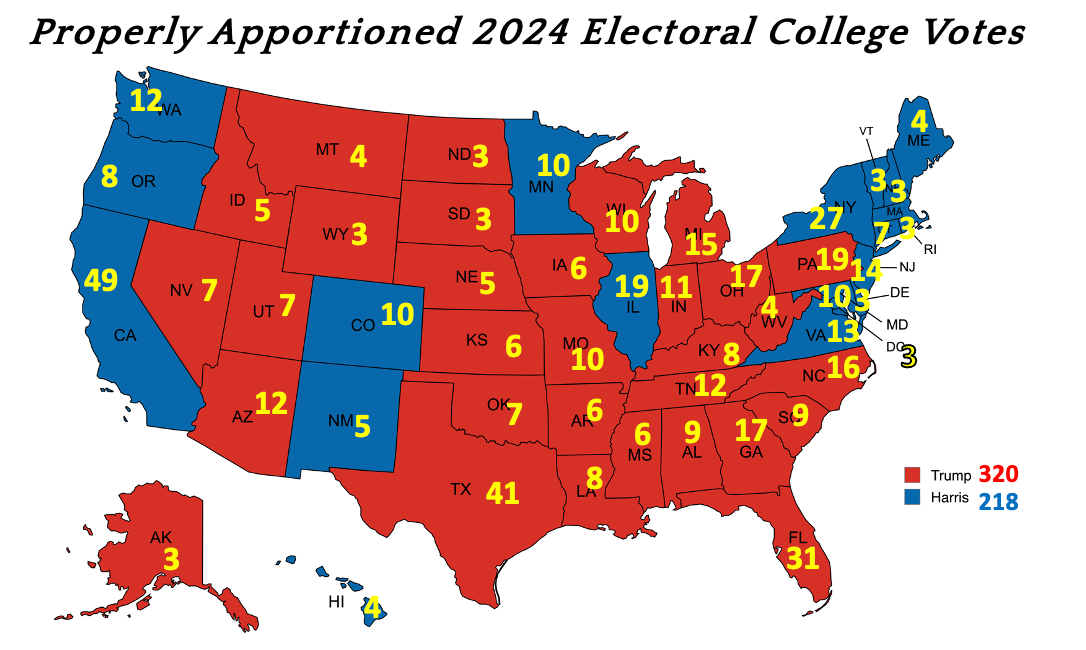The Window for Holding and Expanding the GOP House Majority Has Now Opened
In a time of decisive action, when the country sees everything clearly and media propaganda fails, winners will seize the opportunity, and losers will snatch defeat from the jaws of victory.
Much of what I do falls under the category of expectations management. Getting excited about improbable or impossible scenarios only causes frustration and heartache in the end, when in reality, taking a realistic approach to complex problems allows for an individual or team to properly allocate time, energy, and money toward winning that which can be won.
So it is with 35 Senate seats, all 435 House seats, state legislative chambers, and the variety of offices up for grabs in the 2026 midterm elections. In a February piece, I detailed why the midterm dynamics throughout modern political history are slanted the way they are, and these will primarily impact the disposition of the U.S. House, given that the elected GOP majority was just 220 to 215 last fall thanks to a plethora of ripped off races (a California specialty, like street rioting), weak election laws, and the compromised U.S. Census, which has given blue states as many as 16 more electoral votes than they should have (and thereby, the number of U.S. Representatives).
The U.S. Census Bureau Stole At Least 16 Electoral Votes and 15 U.S. House Seats
Since we are quickly approaching the holidays, I’m feeling charitable. I will publish this article with the naive assumption there is no foul play present in the 2024 election, at least in the race for Electoral College votes - meaning I won’t be saying “Trump should have also carried Minnesota,” even though the execution of their elections is about as…
As I commented last week, there should be no trouble in the GOP holding the Senate, although any blue-to-red pickups are dicey at best.
But why are you so bearish about the odds of expanding the Republican House majority? From my initial 2026 overview:
How solid is the precedent that the President’s party takes a beating in midterms? Since the beginning of New Deal politics (1932 presidential election), beginning with 1934 midterms, the President’s Party has:
· Lost seats in the U.S. House 20 of 23 times (87.0%)
Exceptions 1934, 1998, 2002
· Lost seats in the U.S. Senate 16 of 23 times (69.6%)
Exceptions 1934, 1962, 1970, 1982 (null), 1998 (null), 2002, 2018
· Average loss of House seats is 27 seats since 1934
· Average loss of Senate seats is 3.1 seats since 1934
· Bush ’06 lost 32 House seats
· Obama ’10 lost 63 House seats
· Obama ’14 lost 13 House seats
· Trump ’18 lost 41 House seats
· Biden ’22 lost 9 House seats
· Trump ’18 gained 2 Senate seats, suggesting partisan shift favoring Republicans in statewide races
The biggest headwinds, as demonstrated by historical precedent, are in the House. Currently, the U.S. House Republican majority is sitting at a measly 218-215, owing not only to the perception that the establishment Republican Party is way less popular than Donald Trump, but also to significant changes (and redistricting) made to election law in the past decade, which allows for rampant cheating to distort the strength of legislative majorities at federal and state levels. Read more about the impacts of down ballot cheating in 2024 here.
Clearly, just based on averages and math, it’s an uphill climb for the GOP in 2026 to hold the House. Even taking Biden’s loss of nine seats, the best incumbent midterm performance in 20 years, would put the GOP in the minority at 224-211. The average loss, since 1934, of 27 seats would put the Republicans in Congress at a 242-193 minority.
One day soon, I’ll start digging into the 435 races just as I profiled all 56 races for electoral votes in 2024 (50 states, Washington, D.C., and the five split electoral votes of Maine and Nebraska). For now, the window has opened for the Republican Party to retain and expand its U.S. House majority, in what would be a major political coup given the tendency of the President’s party to get smacked at midterm time, even when the President is popular or on course to be reelected.
Readers should expect to find a variety of suppression polls this summer, especially when it comes to views of the two major political parties, any House races, and the popularity of the President. The fake approve/disapprove poll numbers for Trump have always been with us, and while most propaganda outlets have him somewhere in the upper 40s for approval, the more accurate pollsters like Trafalgar and Rasmussen Reports have him buzzing between 51 and 54% approval. Richard Baris, another pollster I trust, is signaling on social media that Trump’s approval is about to formally skyrocket, which will force the media into a major spin cycle.
Both parties have dedicated committees to taking or holding chambers of Congress, which handle candidate selection, campaign finance, endorsements, and all other bells and whistles associated with a two-year long push to take power.
Anyone leading the U.S. House charge for the GOP, again with just a five-seat majority as elected, would want to see the following to have any hope whatsoever of bucking history’s midterm trends, which suggest a Democrat takeover of the House since the GOP can only afford to lose two seats:
· President Trump with high popularity numbers
· Trump’s policies with high approval ratings
· Public disasters and negative events widely associated with challenging party
· The challenging party in disarray





